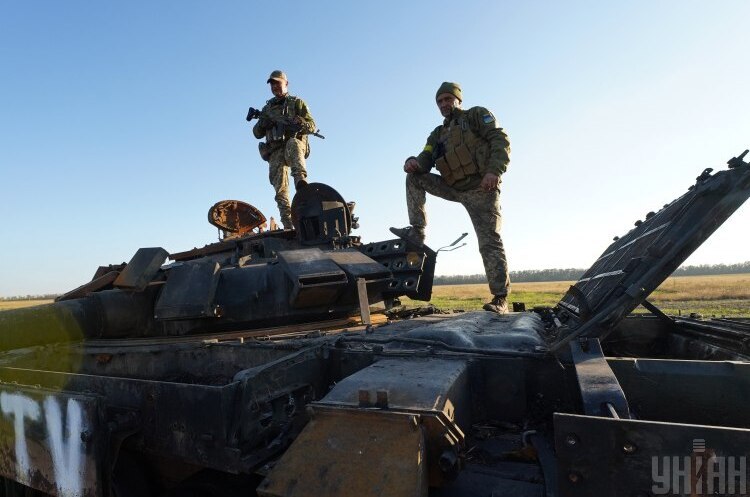The second anniversary of the full-scale invasion: how the Armed Forces of Ukraine have been transformed and what challenges the army faces now
What was done and what was not — and how to change the situation on the battlefield

Ukraine will soon mark the second anniversary of Russia's full-scale invasion of Ukraine's territory. During these two years, the defenders have been holding the line and continue to protect the territorial integrity of our country. Specially for Mind, Mykhailo Zhyrokhov, the military expert, analyzed what results were achieved during this period.
The English translation was prepared by Mind's partner – Bureau translations: MK:Translation.
Read also: Tomorrow after the war: what the USA expects from Russia in case of Ukraine's victory
The second anniversary of the Russia's invasion of Ukraine is an occasion not only to recall the chronology of events, but also to analyze, at least partly, the processes that occurred in various fields. First of all, it concerns the Armed Forces.
The state of Ukraine's army in February 2022
As of February 2022, the Ukrainian army had been at war with Russia for almost eight years. However, throughout this period the Russians tried to act asymmetrically, supporting the illegal armed groups in Donetsk and Luhansk regions, but at the same time acting as a guarantor of the implementation of Minsk agreements in 2015.
But the war still maintained the combat capabilities as six waves of mobilization took place in 2014-2016 (which made it possible to form a reserve of experienced personnel). After 2015, new 15 brigades were formed at once, and some modernization of weapons began. Although, of course, the NATO standards were too far from being met, and the Western allies were in no hurry to provide weapons and ammunition to the Armed Forces of Ukraine.
The Russia's invasion caught the army in a half-deployed state:
- the mobilization of so-called operational reserve No. 1 continued,
- units were deployed to the boarder area under the label of Snowstorm-2022 exercises to counter a possible invasion.
Unfortunately, the law on territorial defense was adopted only in January 2022, but very few practical steps were taken.
At the same time, the military leadership was stable – in 2021, Valerii Zaluzhnyi was appointed as Commander-in-chief of the Armed Forces of Ukraine, who managed to form a stable chain of command.
Read also: Three scenarios for the end of the war in Ukraine: one unrealistic and two compromise ones
The course of hostilities during two years of war
The first days of the invasion were very difficult – in a very short time, the Russians were able to reach the approaches to Kyiv, Kharkiv, Sumy and Chernihiv, and take control of the south of the country. But the first Russian missile and bomb attacks on the places of permanent basing of military units and warehouses were mostly ineffective, as the unites had been dispersed just a couple of days before the invasion. The situation with military aviation is most illustrative in this regard: combat aircraft flew (very often under enemy fire) to alternate sites, and transport aircraft flew to airfields in Poland.
The army managed to withstand the first attack in most areas (except for the South and Donbas) thanks to the very rapid spontaneous formation of territorial defense units, which, in addition to soldiers who already had combat experience, included many ordinary citizens. And it is obvious that the main role was played by the rapid supply of weapons from Western allies.
Moreover, the assortment was very well-chosen – mostly small arms, anti-tank weapons and man-portable air defense systems at that time. These weapons were very easy to master, even for those who had no basic military training. And this made possible to stop the aggressors in the first weeks and push them back from Kyiv, Chernihiv, Sumy regions and Kharkiv by early April 2022. At the same time, the Russians continued their offensive in Donbas and blockaded Mariupol.
After the situation stabilized, the Western Allies began supplying more powerful weapons, including light armored vehicles, tanks and artillery (Soviet models first, and Western models later). Partial mobilization was also resumed.
All of this required the creation of new brigades, which became numerous in a very short time. In the absence of permanent deployment centers, they were formed immediately at the proving ground and sent to the front.
Read also: The second anniversary of the full-scale war: what happened to agriculture. The infographics
Personnel training – what has changed over the past two years
It was then that certain problems were laid, which "echo" even today, two years later. First of all, this is the lack of training and motivation privates and NCOs, and the actual absence of basic military training among the officers. Most of them graduated only from the military department of a civilian university, and even then, mostly, 10, 15, 20 years ago. In addition, the insufficient mastery of Western weapons which were supplied spontaneously, and therefore their maintenance was (and still is) a huge problem.
An attempt to solve the problem of personnel training by sending entire battalions to proving grounds in Europe and having local instructors work with them turned out to be a "road to nowhere": Europeans had been preparing for peacekeeping operations for 30 years and therefore could not teach Ukrainians anything. The only exception is the professional training of air defense units, tankmen, artillerymen and pilots.
Read also: Five lessons of war: what NATO armies learned in Ukraine
However, in 2022, the Ukrainian army managed to conduct two successful offensives that liberated Kherson and most of the Kharkiv region. An offensive operation was also planned for 2023, and assistance from the West in the form of armored vehicles and the formation of assault units with motivated soldiers began to be accumulated for it.
Problems and solutions
However, in the summer of 2023, the offensive on the Zaporizhzhia direction actually failed. The reasons for this outcome will be analyzed by the military of various armies of the world for a long time.
The fact remains that the objectives of the operation were not achieved. Then came the extremely unsuccessful defense of Bakhmut and Avdiivka. All of this led to the fact that in early 2024, the President dramatically changed the top level of military management. For example, he appointed General Syrskyi, former commander of the Ukrainian Ground Forces, as Commander-in-Chief of the Armed Forces of Ukraine.
With this decision, the President set forth, first, the task of formulating a war strategy for 2024. Also, he gave public instructions that included:
- each combat brigade on the first line should receive effective Western weapons;
- solving of the logistics problems;
- the General Corps gaining real experience, rather than staff one, in commanding troops;
- creation of an effective rotation system;
- improving the quality of military training.
Thus, Syrskyi faces a huge number of tasks, the successful completion of most of which depends not only on the internal restructuring of the country on "military lines" but also on external factors.
At the same time, the Russians are moving forward, even though rather slow. In addition, it is clear that Russia may be preparing to further intensify its offensive in the spring. This is despite the fact that the bill to extend military aid packages to Ukraine remains the subject of pre-election discussion overseas and is still under consideration in the US Congress.
However, Europe is slowly "waking up" and a number of support packages have already been announced by countries such as Germany, Sweden, Finland, the Netherlands, Latvia and Estonia. Also, Canada was added to these European countries. Summarizing all these factors, it's clear that they will have an impact on Ukraine's strategy for this year. This will affect on how Ukraine will implement its plans in 2024.
The OpenMind authors, as a rule, are invited experts and contributors who prepare the material on request of our editors. Yet, their point of view may not coincide with that of the Mind editorial team.
However, the team is responsible for the accuracy and relevance of the opinion expressed, specifically, for fact-checking the statements and initial verification of the author.
Mind also thoroughly selects the topics and columns that can be published in the OpenMind section and processes them in line with the editorial standards.






